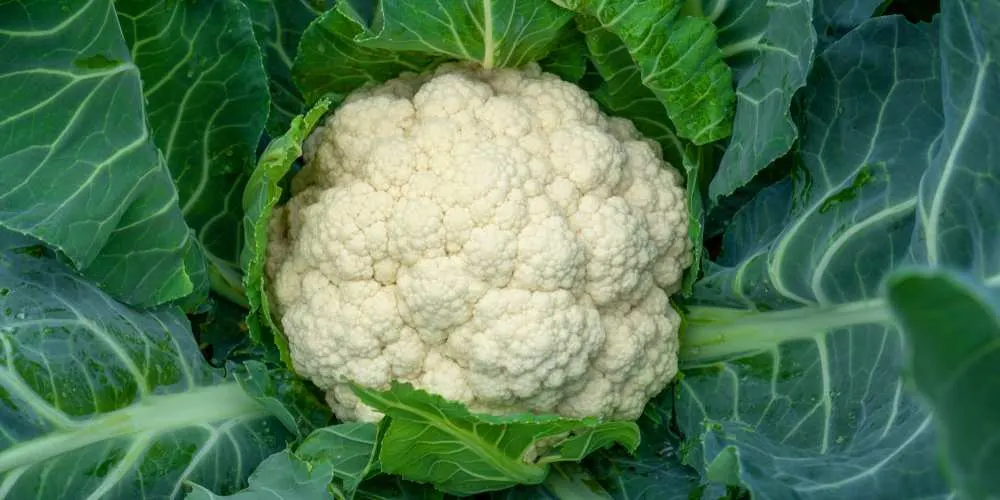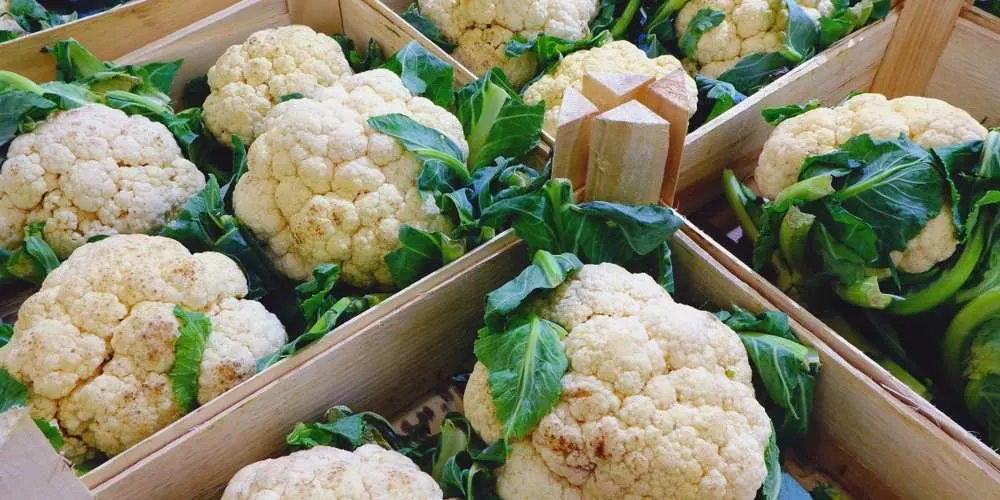As caring hammy parents, we often worry too much about our hamsters just because they are so small. Among many other food-related questions, “Can hamsters eat cauliflower?” caught my attention the other day.
Well, my dear readers, I’m glad to inform you that they certainly can! A treat that is healthy, sweet, and rich in nutrients at the same time? It’s unheard of!
But, like with every other snack, there needs to be a specific amount that you can give them. So how much is that exactly and how many times per week can you give your hammies some cauliflower? Are there any consequences in offering them more than you should?
There are many different species of hamsters, and they all differ in body size. That alone can affect the dose of cauliflower that is sufficient for them as a snack. Stick around to find out just how much cauliflower you can give to your type of hammy!

Hamsters’ Diet And Day-To-Day Life
It is necessary to address that you need to take great care of your hamsters’ diet. Their fellow counterparts are naturally omnivores in the wild. That allows them to have full access to both animals and plants that can be found in nature.
Because of that, wild hammies can digest both plant and animal matter, and in doing so, they absorb all the nutrients they need. Nearly every vegetable or fruit that they stumble upon will be eaten. The same can be said for insects, as they will gladly eat them whenever they find some.
Digesting animals provides hamsters with protein, making them solid and durable for every nature’s unforgiving trait. Plants are their primary source of food as they possess fiber that is necessary for their digestive system.
Wild hamsters need to take care of themselves as no one stands above them, monitoring their every move. Being entirely prey to other animals, hammies need to be in a constant alert mode to survive.
They prefer to traverse through dense and tall grass in the day, but during the night, hamsters can move more freely as there is no sun to reveal them that easily. To find mealworms and insects, they dig underground – making it safer for them than plants that are generally located at surface level.
On the other hand, pet hammies don’t worry about such things as we are there for them. Providing them with shelter, food, freshwater, and treats, we make sure that they are perfectly safe and loved for the rest of their lives!
Tamed hamsters’ diet mainly consists of:
- Fresh fruit and vegetables
- Healthy greens
- Fresh hay
- Occasional snacks
So, where does cauliflower fit into all of this? As an annual plant harvested in the late autumn, you might think it makes its debut in hamsters’ everyday diet. But that is not the case as it must be treated as an occasional snack for hammies!
Snacks must always differ from regular food intake as they don’t contain the necessary nutrients for a healthy diet. This means that the number of treats given to your pets must be carefully measured and offered with great care. It refers to the amount and time.
When people ask me how much cauliflower should I give to my pet hamster, I always start with the condition that must be met beforehand. That being cleanliness. Before offering cauliflower to hammies, every part needs to be cleaned thoroughly.
Gently wash the cauliflower in the dish with cold water until the dirt is washed down. The same can be said for stuff like pesticides or insecticides commonly sprayed on plants to help them stay intact. It’s invisible to the naked eye, so don’t take any chances!
After you’ve cleaned the cauliflower, take a knife and slice it into small pieces. One teaspoon of cauliflower should be a sufficient amount to give to your beloved furballs. As for how many times is adequate, I always recommend four times per week tops.
It is necessary to address that there are a few different species of hamsters. Every one of them will provide you with lots of love and attention, but they differ in size depending on the species. Because of that, some types of hamsters need to be offered less than the amount I just recommended.
I’ll dissect them into two groups:
- Roborovski hamsters and Syrian hamsters (one teaspoon of cauliflower, four times a week)
- Campbell’s dwarf hamsters, Winter white hamsters, and Chinese hamsters (one half of a teaspoon, three times a week)
The size of the hamster is of great importance. Giving your hammy too much cauliflower in the form of snacks may lead to some complications. Problems that most commonly occur are weight management and stomach issues.
Weight Management
Commonly, hamsters start to lose weight during the autumn months in anticipation of winter. That happens not only for their wild counterparts but even for pet hammies. Because of that, when the time comes, they will begin to stock up on food both in a safe place and in themselves.
If wild hamsters live in a too cold place to operate risk-free, they will begin to hibernate.
Domesticated hamsters rarely hibernate as we provide them with all the necessary stuff to survive the winter colds. Although they nearly never hibernate, that doesn’t stop them from consuming more food than they should.
That can lead to weight management problems. You should avoid giving them too much cauliflower (and every other type of snack), as being overweight will prove detrimental to their health. Bloating most commonly happens to hammies that overeat cauliflower.
Stomach Pain
A behavioral characteristic of hamsters is food hoarding. As I’ve mentioned before, they stock up on food in a safe place. Wild hammies do that in preparation for the winter as it makes it much easier to eat the food that is already located in a warm and protected place.
Instinctively, they only collect food that isn’t prone to deteriorate that quickly. Hamsters must maintain the “freshness” of the food throughout the winter. Domesticated hamsters, on the other hand, do not need to do so.
But in some rare cases, psychologists say that they may tend to do that from time to time. You shouldn’t consider yourself too much with that as it won’t lead to any deadly consequences. Yet, if you catch your hammy hoarding, make sure that it doesn’t put cauliflower on a pile for later.
Hamsters should only eat cauliflower when it is fresh and immediately after you’ve given it some. Letting them save it for later puts them at risk of eating rotten cauliflower. That can cause stomach pain which can even lead to diarrhea. So always make sure that they don’t leave it for later!
Be consistently patient and considerate when giving them treats to prevent adverse side effects from occurring!

Nutritional Facts About Cauliflower
I don’t want to scare you anymore with the negative stuff, so I’ll jump right into the positives from now on! To understand why cauliflower is so beneficial for your furball’s health, we need to dissect its core.
That being said, take a look at its macros:
| Water | 92 g |
| Energy | 25 kcal |
| Fiber | 2 g |
| Sugar | 1.9 g |
| Protein | 1.9 g |
| Fat | 0.3 g |
| Potassium | 299 mg |
| Phosphorus | 44 mg |
| Sodium | 30 mg |
| Calcium | 22 mg |
Your hammies need to be on a constant move – it’s in their genes.
By building them a cage fully packed with toys and obstacles, you are giving them a reason to run all around the place. Fiber comes in handy with that as it regulates the digestive system of hamsters, making them operative and fully prepared for all sorts of games inside the cage.
If any toxins are present inside your pet friend, cauliflower will be ready even for that! Providing a powerful antioxidant, it will make sure to eradicate any unwanted poisons that roamed freely inside them.
Vitamins present in cauliflower will help them out with their lousy eyesight. They will regulate skin and even bone metabolism!
To say the very least – it is a phenomenal snack fully equipped with beneficial nutrients that aid the health of your hamsters!

Can Hamsters Eat Cauliflower? – In conclusion
If some of you are still unsure can hamsters eat cauliflower, don’t worry; it is a perfectly safe snack for them! Being a plant makes it a suitable treat for your hammies; cauliflower is rich in nutrients that are beneficial when considering their overall health.
They are fully packed with antioxidants, fiber, and vitamins to aid your hammies whenever needed.
Water is the main ingredient of cauliflowers, making up over 90% of it. Keep that in mind as you offer some to your furballs as it can make them bloat if given too much. The amount should be relatively easy to determine just by confirming what type of hamster do you possess.
Always make sure to properly wash the plant before cutting it and offering it to your hammy as it may contain pesticides that are impossible to see for the naked eye.
Buy their love by treating them with some cauliflower from time to time; they will enjoy it without a doubt!


